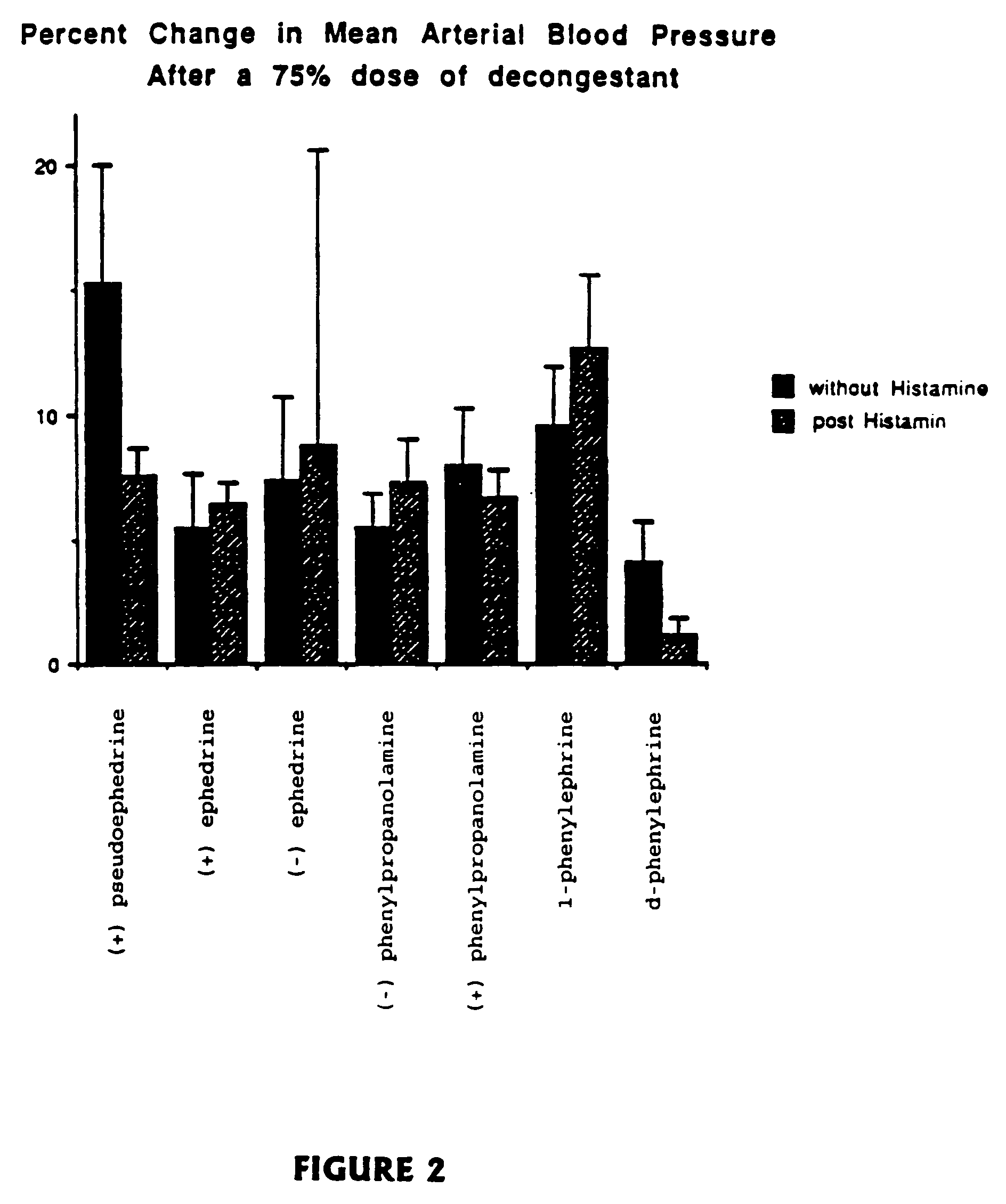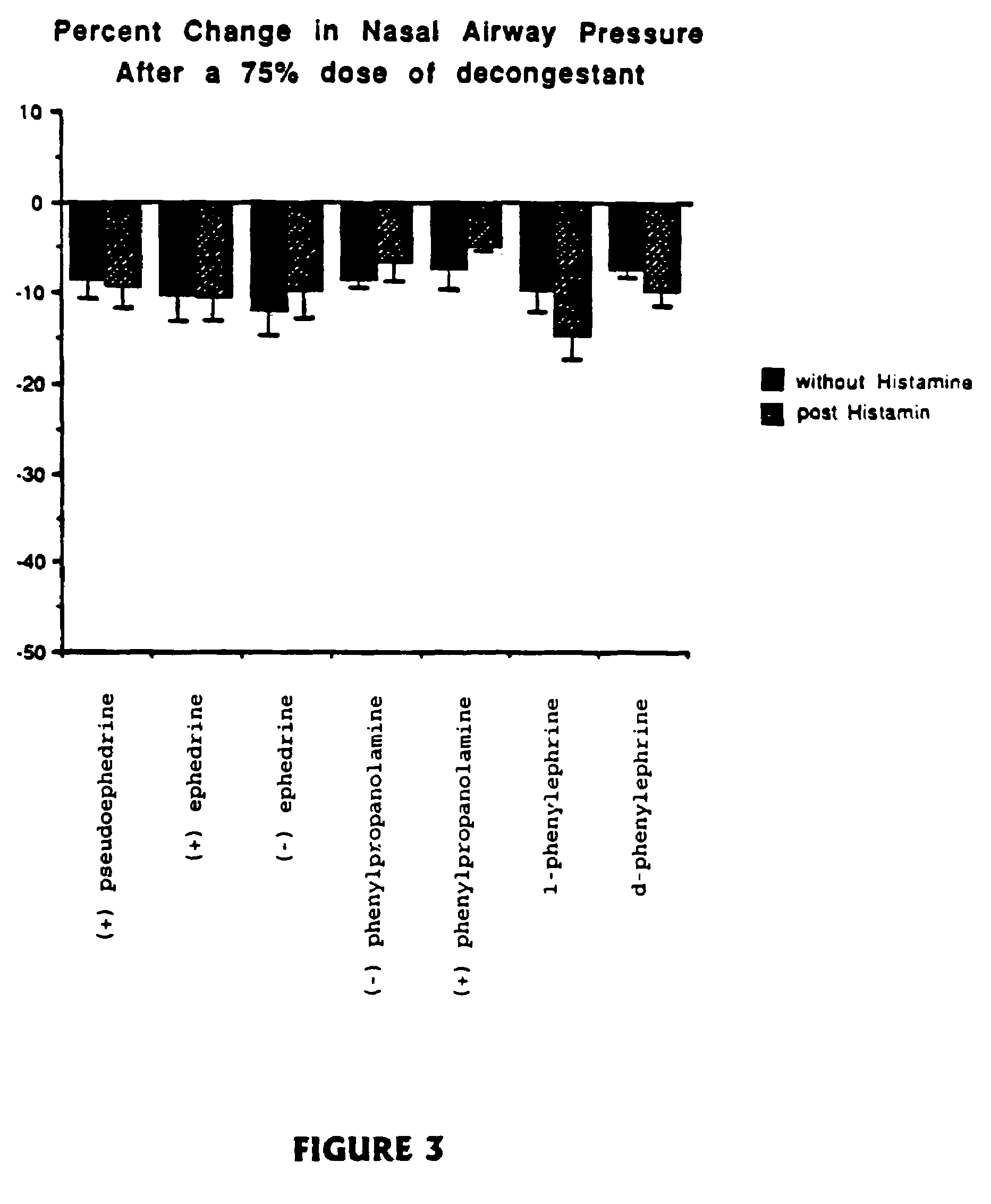Stereoisomers with high affinity for adrenergic receptors
a technology of adrenergic receptors and stereoisomers, which is applied in the field of stereoisomers with high affinity for adrenergic receptors, can solve the problems of reducing the amount of mucous secreted into the nasal passage, vascular constriction, and reducing the flow of fluids into the surrounding tissues
- Summary
- Abstract
- Description
- Claims
- Application Information
AI Technical Summary
Benefits of technology
Problems solved by technology
Method used
Image
Examples
example 1
Compounds Tested
[0049]Many of the compounds of the present invention have two asymmetric carbon centers on the side chain leading from the ring. According to the present invention, the first asymmetric carbon center has an R configuration and the second asymmetric carbon center may have an S configuration. Compounds tested for binding affinity to adrenergic receptors are shown below.
[0050]
example 2
α-Adrenergic and β-Adrenergic Receptor Binding Studies
[0051]Many physiological processes are mediated by the binding of chemical compounds to α1, α2 and β2 receptors. For example, many compounds which reduce nasal congestion bind to α1 and α2 receptors and some reduce bronchial congestion by binding to β receptors. Accordingly, a compound that binds to α1, α2 and / or β2 receptors may be an effective nasal or bronchial decongestant.
[0052]More specifically, α2 adrenergic receptors, concentrated on precapillary arterioles in the nasal mucosa, induce arteriolar vasoconstriction when activated by a sympathomimetic compound. Such vasoconstriction decreases blood flow through those vessels and reduces excess extracellular fluid associated with nasal congestion and a runny nose. On the other hand, α1 adrenergic receptors are concentrated on postcapillary venules in the nasal mucosa Binding to α1 receptors induces venoconstriction, which also reduces nasal congestion.
[0053]Compounds that bind...
example 3
Pupil Dilation and Intraocular Pressure
[0081]The ability of the present stereoisomers to induce pupil dilation (mydriasis) was compared to the pupil induction of known mydriatic agents. The (+)-stereoisomer of pseudoephedrine and the (−)-enantiomer of phenylephrine are known to be a mydriatic agents.
Methods:
[0082]The following stereoisomers were evaluated for their efficacy in producing mydriasis and for their effects on intraocular pressure (IOP): (+)-pseudoephedrine, (−)-pseudoephedrine, (+)-ephedrine, (−)-ephedrine, (+)-phenylpropanolamine, (−) phenylpropanolamine, (+)-norpseudoephedrine, (−)-norpseudoephedrine and metaraminol bitartrate salt. These diastereomers were administered topically as either 1% or 2% solutions in buffered saline. Pupillary diameter and IOP were measured in all animals over a six hour time period during the day to minimize diurnal variations in IOP and pupil diameter.
[0083]The experiments were performed on adult male New Zealand white rabbits weighing 3.0...
PUM
| Property | Measurement | Unit |
|---|---|---|
| Temperature | aaaaa | aaaaa |
| Mass | aaaaa | aaaaa |
| Mass | aaaaa | aaaaa |
Abstract
Description
Claims
Application Information
 Login to View More
Login to View More - R&D
- Intellectual Property
- Life Sciences
- Materials
- Tech Scout
- Unparalleled Data Quality
- Higher Quality Content
- 60% Fewer Hallucinations
Browse by: Latest US Patents, China's latest patents, Technical Efficacy Thesaurus, Application Domain, Technology Topic, Popular Technical Reports.
© 2025 PatSnap. All rights reserved.Legal|Privacy policy|Modern Slavery Act Transparency Statement|Sitemap|About US| Contact US: help@patsnap.com



